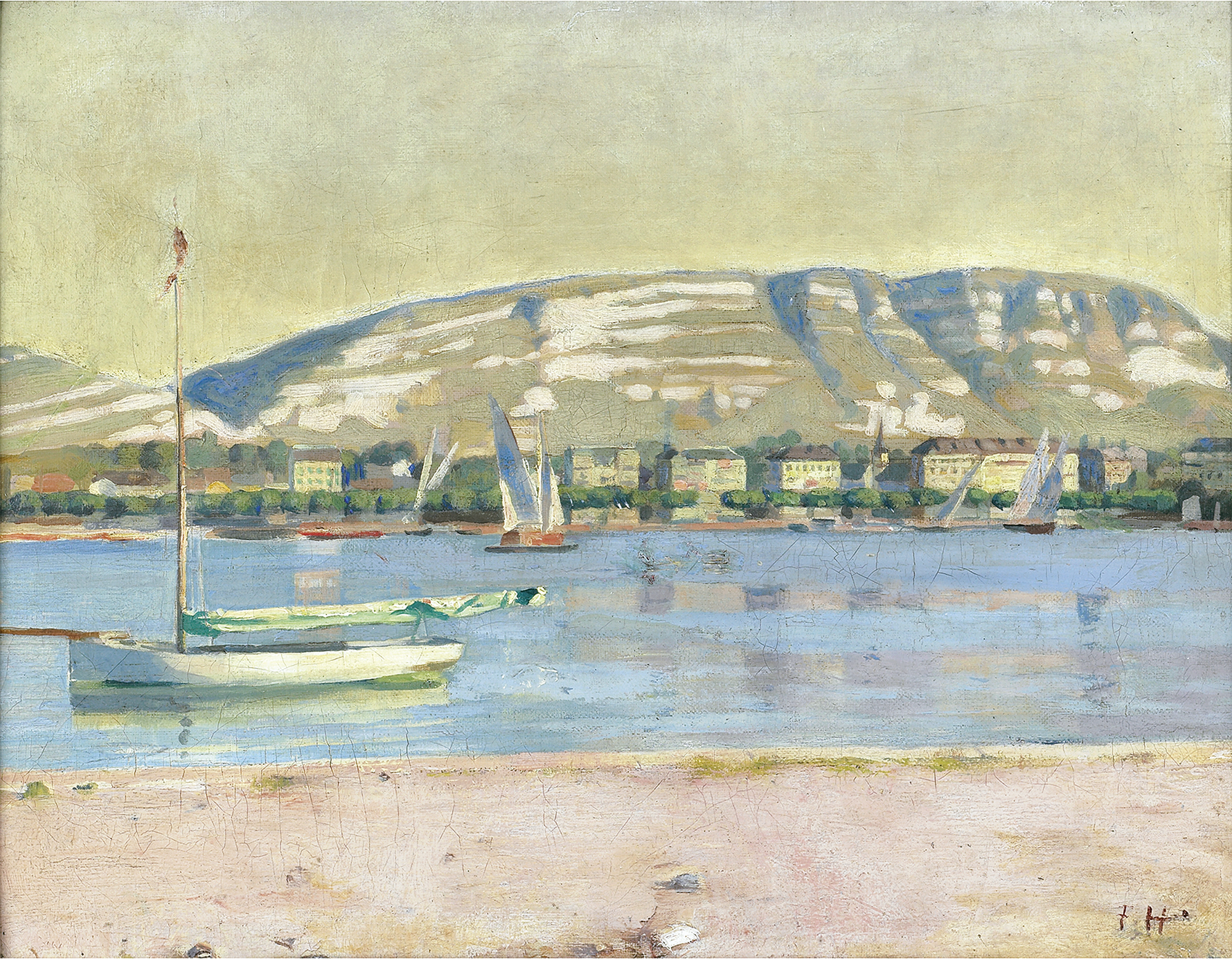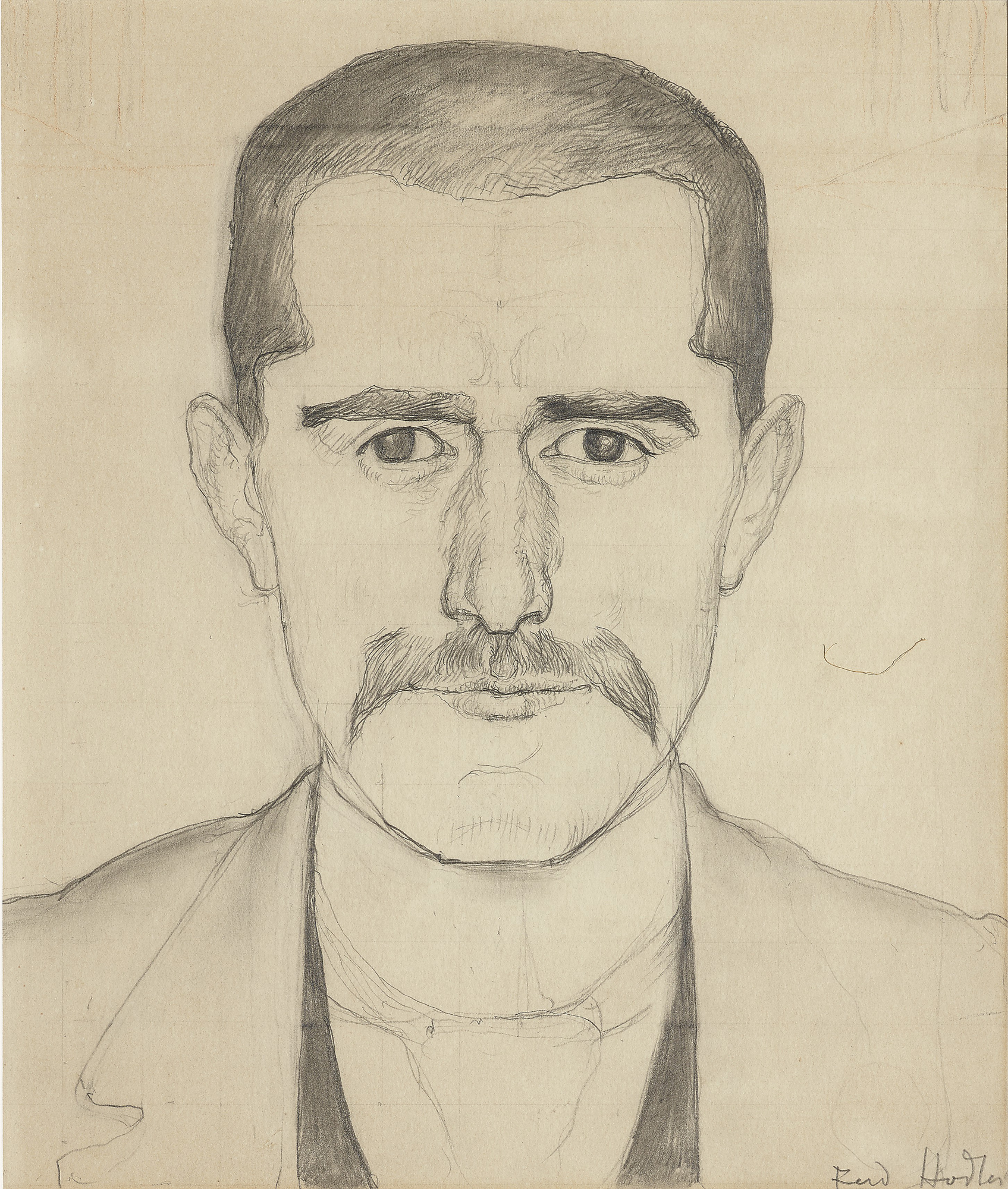Ferdinand Hodler is not only the painter of his day who is currently the most appreciated abroad, but he also constitutes in Switzerland an artist of national stature who is widely recognised for his figure painting and landscapes.
Born in Bern in 1853, Hodler receives training as a painter of “tourist views”. He goes to Geneva at the age of eighteen in order to discover for himself the work of Alexandre Calame and François Diday on display at the Musée Rath. Once settled in the city, he meets Barthélemy Menn, who will be his teacher at the School of Fine Arts from 1874 to 1877. Hodler’s training as a painter is rooted in realism then before he turns towards symbolist subjects with an increasingly brighter palette.
Between the setbacks and official recognition, he meets with great success in Paris and Vienna, where he is the guest of honour at the 19th Secession Show in 1904. There he exhibits over thirty works and the event truly establishes him internationally as an artist to be reckoned with. The singularity of his art is clearly seen in the expressive power of his line, his bright colours and the rhythmic arrangements of shapes in his “Parallelist” compositions.
In 1911, the Swiss National Bank introduces a series of banknotes designed by Hodler. The final years of his life are taken up by commissions for a fresco in the Swiss National Museum of Zurich (La Retraite de Marignan – The Retreat of Marignan) and other grand compositions of figures like his Regard dans l’infini (Gaze into the Infinite). Hodler passes away in 1918 in his flat in Geneva at 29, quai du Mont-Blanc, where the artist, in failing health, painted his last landscapes of the Genevan waterfront, works that are infused with a very strong symbolic component and bright, vibrant hues.
Born in Bern in 1853, Hodler receives training as a painter of “tourist views”. He goes to Geneva at the age of eighteen in order to discover for himself the work of Alexandre Calame and François Diday on display at the Musée Rath. Once settled in the city, he meets Barthélemy Menn, who will be his teacher at the School of Fine Arts from 1874 to 1877. Hodler’s training as a painter is rooted in realism then before he turns towards symbolist subjects with an increasingly brighter palette.
Between the setbacks and official recognition, he meets with great success in Paris and Vienna, where he is the guest of honour at the 19th Secession Show in 1904. There he exhibits over thirty works and the event truly establishes him internationally as an artist to be reckoned with. The singularity of his art is clearly seen in the expressive power of his line, his bright colours and the rhythmic arrangements of shapes in his “Parallelist” compositions.
In 1911, the Swiss National Bank introduces a series of banknotes designed by Hodler. The final years of his life are taken up by commissions for a fresco in the Swiss National Museum of Zurich (La Retraite de Marignan – The Retreat of Marignan) and other grand compositions of figures like his Regard dans l’infini (Gaze into the Infinite). Hodler passes away in 1918 in his flat in Geneva at 29, quai du Mont-Blanc, where the artist, in failing health, painted his last landscapes of the Genevan waterfront, works that are infused with a very strong symbolic component and bright, vibrant hues.

